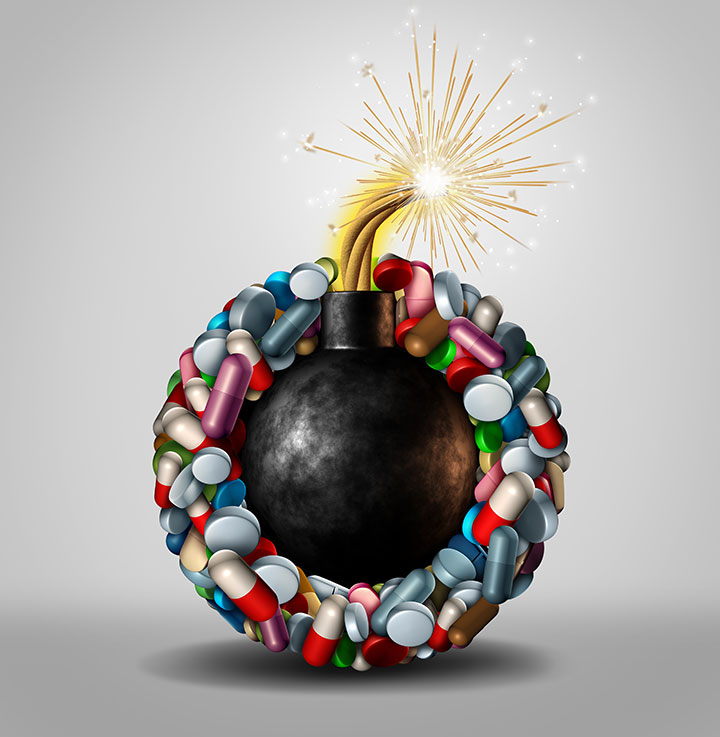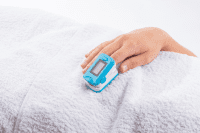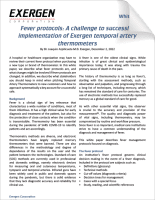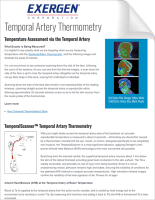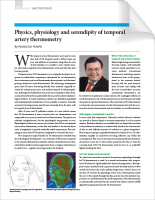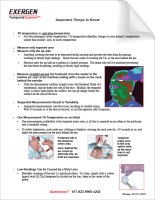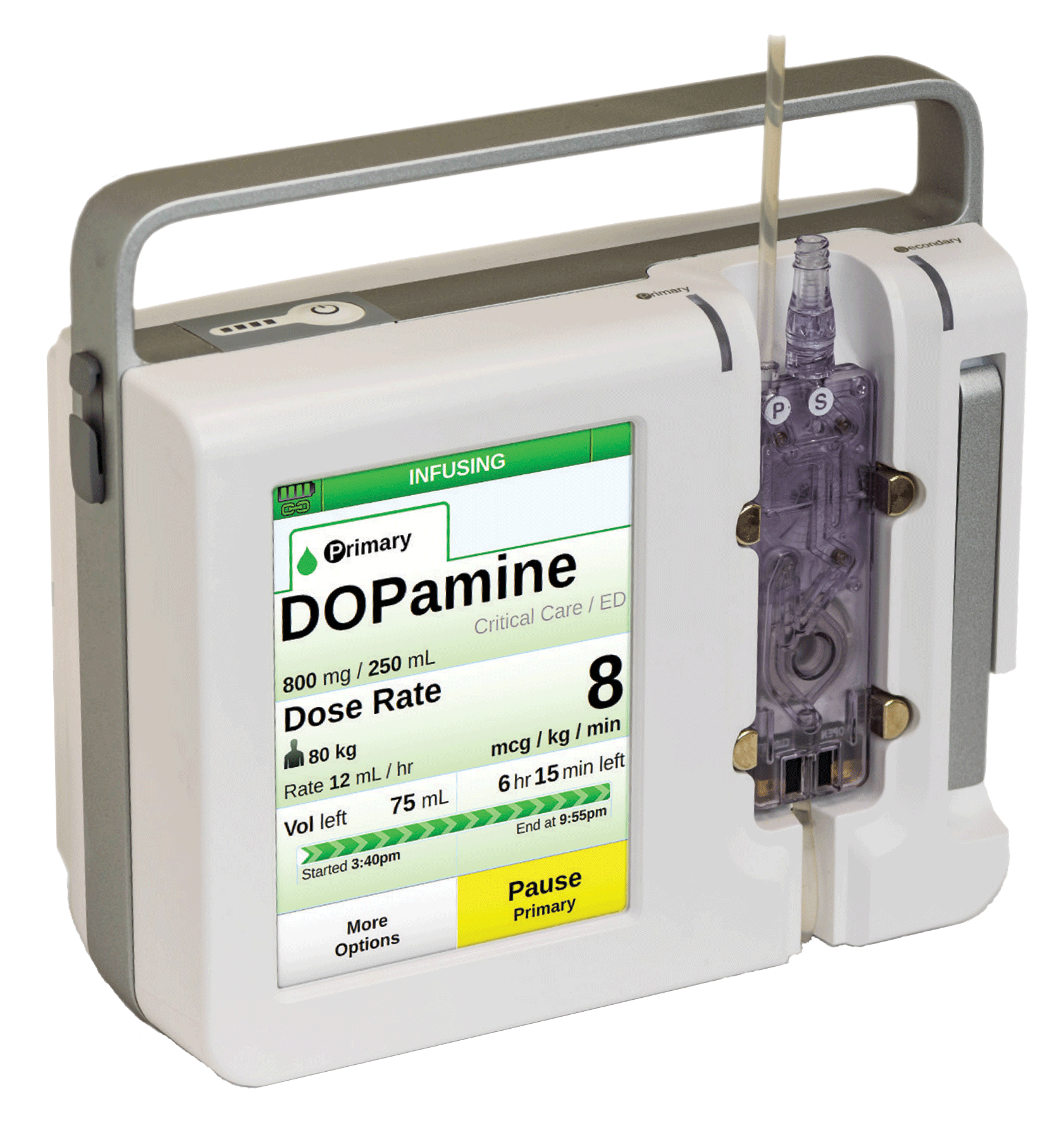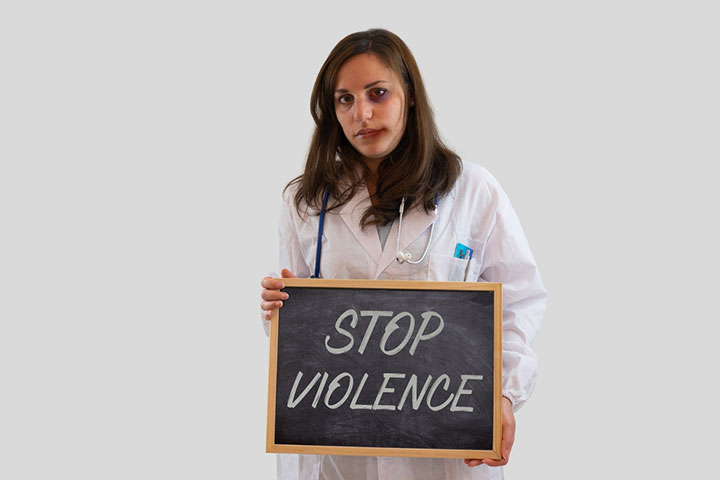Safety and best practice for nurses


One of the bittersweet ironies of healthcare is that drugs powerful enough to kill cancer cells also can harm healthy cells—and not just the patient’s. Because hazardous medications can harm those who handle them, preparation, administration, manufacture, and disposal present a threat to clinical and nonclinical healthcare workers. Unfortunately, “this hazard is likely to be underrecognized,” said AnnMarie Walton, PhD, MPH, RN, OCN, CHES, FAAN, assistant professor at the Duke University School of Nursing in Durham, North Carolina.
Exposure to hazardous drugs can result in skin rashes, reproductive issues, genetic damage, and cancer. According to Silliker, due to the latency period of some medications, chronic conditions—including damage to the kidneys, heart, liver, or lungs—may surface up to 15 years later. The National Toxicology Program concluded that moderate evidence shows that occupational exposure to chemotherapy agents is associated with an increased incidence of spontaneous abortion and genetic toxicity in humans. Cytotoxic drugs treat cancer but also are used for psoriasis, rheumatoid arthritis, and some viral diseases, such as HIV. Common antineoplastic medications in everyday use include carbamazepine, estrogens, fluconazole, phenytoin, tamoxifen, testosterone, and warfarin.
Exposure risks
Powerful against disease, most antineoplastic drugs also are carcinogenic, placing exposed workers at increased risk for leukemia, non-Hodgkin’s lymphoma, and liver or bladder cancers. According to the National Institute for Occupational Safety and Health (NIOSH), approximately 8 million U.S. healthcare workers face the risk of hazardous drug exposure.


Some hazardous drugs are toxic even at low levels. “There is no known safe exposure level for hazardous drugs,” said Rachael Crickman, DNP, ARNP-CNS, AOCNS, OCN, an oncology research nurse educator at Swedish Medical Center in Seattle, Washington. Crickman, who knows firsthand the dangers of hazardous drug exposure, said that this is her most significant concern.
Crickman was working as an oncology nurse years before robust personal protective equipment (PPE) requirements existed. One day, after cleaning up a chemotherapy spill, she immediately experienced dizziness and a sudden headache. The event prompted her to examine her own practice and begin advocating for change. “I want nurses to be informed, protected, and empowered to advocate for their own safety. I also don’t want nurses burdened with concerns or anxiety about the risks of their profession,” she said. “Numerous studies show biological evidence of hazardous drug absorption, but from my understanding, it’s difficult to determine at what point these effects become problematic.”
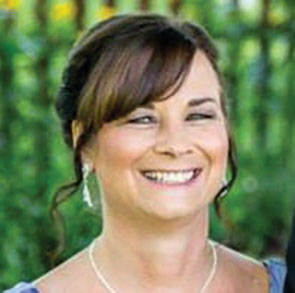

Nurses, nursing assistants, and environmental service workers routinely experience exposure in patient care settings. “Most often, it’s frequent exposure, and not one-time exposure, that can be harmful,” said Laura Galunas, DNP, MBA, OCN, MedSurg-BC, CNML, clinical nurse director of oncology at Michigan Medicine in Ann Arbor. Even with set protocols and the required use of PPE, many clinical and nonclinical personnel remain unaware of the extent of this hazard and are needlessly exposed.
Exposure routes
From the moment a hazardous drug enters a facility, the entire healthcare team—receiving and handling personnel, pharmacists, nurses, nursing assistants, dietary and environmental services workers—is at risk. Walton’s research examined levels and locations of surface contamination in oncology units where antineoplastic drugs were administered. The results were consistent with a 2018 study the team completed showing that contamination extended beyond patient care areas to locations where staff spend time, such as bathrooms, breakrooms, and locker rooms. Some cytotoxic drugs are extremely difficult to clean up and can remain on surfaces, further increasing risk.
Hazardous drugs are commonly prepared in a liquid or solid form and then administered via I.V., injection, or as a tablet. Preparation, administration, and disposal of liquid or solid hazardous drugs can produce drops, vapors, or dust clouds that may linger in the air. Exposure can occur through the following routes:
- Inhalation (breathing vapors or dust when mixing liquids or crushing pills)
- Ingestion (not washing hands before eating or putting contaminated pens in the mouth)
- Skin absorption (direct contact through spills, contaminated surfaces, handling excreta)
- Accidental injection (skin puncture with sharps)
Routine exposure to hazardous drugs isn’t limited to mixing, preparing, administering, or disposing of them. Cytotoxic drugs are excreted in urine, stool, or emesis and found in semen, saliva, and sweat, making contaminated linens, gowns, and toilet seats potential sources of exposure.
“I’m really concerned about excreta as a source of exposure to hazardous drugs,” Walton said. Contaminated excreta have long-term implications because patients may excrete these drugs for up to 7 days after administration, depending on the patient’s metabolism, the drug, and other factors. Exposure potential increases when staff don’t wear PPE when handling excreta. “Our team found that most PPE is used during administration,” Walton said. “Less in disposal, and least in the handling of excreta.”
In a 2016 study of 27 nursing assistants in an inpatient hematology–oncology unit, Walton and her team found “suboptimal use of PPE when handling excreta by nursing assistants.” In their 2018 study on surface contamination, of the surfaces sampled in patients’ rooms, toilets had the highest levels of contamination with chemotherapy. These high levels caused “concerns of exposure risks for both nursing assistants who do the majority of toileting and for environmental services workers who clean those areas,” Walton said. “I’m concerned that so little PPE is used when handling excreta.”
Inside patient rooms, contamination was found on the floors, doorknobs, I.V. poles and pumps, and remote controls. In their 2020 study, Walton and colleagues found low levels of contamination on telephones and in staff bathrooms, breakrooms, and other “shared areas” where exposure isn’t anticipated so PPE isn’t used. The floor was the most contaminated shared area, including around I.V. poles, waste bins, and common desks.
Walton’s passion for protecting healthcare workers from hazardous drug exposure goes back to an event she’ll never forget as a new nurse administering chemotherapy. Her patient decided to go for a walk outside the unit. This was before tubing labels were used to identify the hazardous drugs infusing through them. Unfortunately, her patient tripped in the lobby, unspiking the bag and spilling the drug. When notified, she donned PPE and ran downstairs to find a helpful environmental services worker holding soaked paper towels in his ungloved hands, explaining that he had already begun to help clean up the spill. Her deep concern for those who are untrained about the risks of exposure has directed her life’s work. (See Handling excreta: Best practices.)
Handling excreta: Best practices.
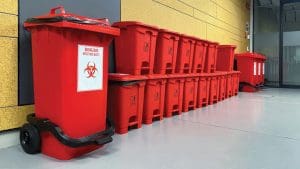

Many hazardous drugs are excreted in urine, stool, vomit, and to a lesser degree, in semen, saliva, and sweat. The body eliminates most hazardous drugs within 48 hours; some take longer. Some drugs are excreted as unchanged, inactive metabolites, while others are excreted as active, hazardous metabolites. The Food and Drug Administration doesn’t require the mutagenic properties of excreted drugs, so this information isn’t available for all drugs.
We know that toilets, linens, and clothing of people receiving chemotherapy drugs may be contaminated with excreta that contain unchanged drugs. Best practices when handling excreta will prevent inadvertent exposure.
- As a general guideline, wear PPE for 3 to 5 times the drug’s half-life. For example, apalutamide has a half-life of 3 days (it takes 3 days for half of the dose to be cleared from the body). Therefore, PPE should be worn 9 to 15 days after the last dose.
- Wear two pairs of chemotherapy gloves and a disposable chemotherapy gown.
- Wear face and eye protection when emptying a urinal or rinsing a commode for protection from splashing.
Preventing exposure


Every aspect of handling hazardous drugs has the potential for exposure when staff don’t follow proper precautions. Combining appropriate PPE, closed system transfer devices, and a culture of safety may help limit exposure.
PPE
PPE and closed system transfer devices are equally necessary for safety. “Closed system transfer devices do not take the place of PPE any more than airbags take the place of seat belts. We use both for safety when driving,” said Seth Eisenberg, RN, OCN, BMTCN, who recently retired after 36 years at the Fred Hutchinson Cancer Center in Seattle, Washington. Chemotherapy gowns, gloves, respirators, eye protection, face shields, and shoe covers fall within the realm of PPE.


However, use of “impervious gowns and gloves” is lacking among staff, said Lisa DiBlasi Moorehead, EdD, MSN, RN, CENP, former associate nurse executive in the division of accreditation and certification operations at The Joint Commission. According to The Joint Commission’s analysis of surveys from more than 9,000 hospitals, the most common risk identified was staff not wearing the appropriate PPE during preparation, administration, or dispensing of hazardous medications, said DiBlasi Moorehead. When staff are educated to know which medications are hazardous, they can choose PPE specific to those medications.
“But the truth is that PPE is the last mode of protection,” Eisenberg said, “by the time PPE is doing any good, the drug is already out of the bag or tubing and in the environment.” Eisenberg stresses the importance of adhering to strict safe-handling guidelines, declaring that the primary goal is to prevent hazardous drugs from getting into the environment. “Closed system transfer devices—to varying levels—do that,” he said.
Closed system transfer devices


Closed system transfer devices impact safety for both patients and providers. They reduce hazardous drug leakage into the environment by containing vapors, droplets, or aerosols and prohibiting the transfer of environmental contamination into the closed medication system.
Most of these devices are compatible with standard vials, syringes, pumps, I.V. bags, and infusion lines, allowing for easy-to-use, quick, and secure connections. A quality closed system transfer device creates an airtight and leakproof connection that results in direct protection against exposure. Most are designed to keep the work simple, with single-motion connections that snap into place with minimal force. Safety and ease of use were among the top priorities Jamie Tharp, PharmD, BCSCP, pharmacy manager and chair of the University of Michigan Health Hazardous Drug Oversight Committee in Ann Arbor, and her team discussed as they considered upgrading their closed system transfer device in preparation for full compliance with United States Pharmacopeia (USP) General Chapter <800> (standards written for staff safety).
“We wanted a closed system transfer device that provided a full barrier and dry disconnect containment features, improved component ergonomics to reduce repetitive motion injuries, and ease of staff education on component use,” she said.
Some hazardous drugs can linger in the air or on surfaces longer than others, increasing the likelihood of harming those who encounter them, which is why closed system transfer devices are a necessary step when handling hazardous drugs. When used as designed, these devices create an added layer of safety on many levels. Tharp said that her organization wanted a brand that wasn’t valved or filter-based. To decrease repetitive motion injuries, they also sought a system without forceful connections or the need for twisting motions.
“Closed system transfer devices represent the single biggest improvement in nursing safety,” Eisenberg said. Although no standardized testing protocol or agency exists to ensure closed system transfer devices function as intended, USP <800> requires them for administration when dosage form permits.
“NIOSH is really clear that closed system transfer devices are more effective at limiting our exposure to hazardous drugs than PPE,” Walton said. “These devices are a critical component of minimizing environmental contamination and reducing exposure to hazardous drugs at the point of administration in areas where patients, healthcare workers, and even visitors could be exposed.”
However, these systems aren’t foolproof, which is why proper PPE is required. According to Crickman, “All systems can have failures. I’ve witnessed several instances where closed system transfer devices have failed despite proper use.”
Even though PPE is considered the last stop in the hierarchy of controls, “It should be placed at the point of use to promote compliance, ensuring that staff will not have to cut corners,” Crickman said. “Sometimes we can’t necessarily make it easy to do the right thing, but then we must make doing the right thing worthwhile through education and awareness.” (See USP <800> summary: What nurses should know.)
USP <800> summary: What nurses should know.
The U.S. Pharmacopeia (USP) General Chapter <800> establishes standards for handling hazardous drugs. These standards—enforced by the Food and Drug Administration, state pharmacy boards, and certain accrediting agencies, such as The Joint Commission—require organizations to create a compounding supervisor role to oversee these risk-prevention policies.
The National Institute for Occupational Safety and Health, Oncology Nursing Society, and Hematology/Oncology Pharmacy Association offer guidelines to address the occupational risks of hazardous drugs and recommend creating evidence-based policies consistent with USP chapters. This includes policies and procedures related to hazardous drugs as well as education, training, and safe-handling precautions, which frequently encompass the following:
- Wear personal protective equipment, including two pairs of chemotherapy gloves and polyethylene-coated polypropylene disposable gowns, when administering hazardous drugs.
- Routinely use surface wipe sampling to assess environmental residue levels.
- Use a closed system transfer device for administering all antineoplastic drugs.
- Use respiratory protection for hazardous drug spills.
- Avoid manipulating hazardous drugs (for example, don’t crush tablets).
- Obtain mandatory education, training, and competency validation from your organization.
- Identify all hazardous drugs with hazard labels (from receiving to disposal).
- Enroll in a medical surveillance program to minimize adverse health effects of exposure.
Safety culture
A safety culture supports the education and awareness necessary to validate the challenges many nurses face when handling hazardous drugs, including treating hazardous drugs like any other drug. “It becomes harder to add more steps—as in putting on PPE or adding more equipment or attaching a closed system transfer device,” Eisenberg said. “If the culture doesn’t exist, then all the gizmos and gowns won’t help.”
Healthcare organizations set the foundation for safeguarding both patients and staff. Per The Joint Commission standard requirements, organizations are expected to take steps to minimize risks associated with handling and disposing of these medications. DiBlasi Moorehead said that healthcare organizations can specifically focus on training workers about hazardous drugs specific to their work areas, providing eye-wash stations, and making proper PPE available in work areas. Establishing safety practices within these high-risk spaces presents an ideal starting point.
According to Galunas, emphasizing safety involves decreasing distractions and urgency surrounding drug preparation by “creating workspaces for drug preparation at the bedside and placing PPE and safety containment equipment at the point of care.”
“Nurses are experts in quality, safety, and the patient experience,” Walton said. They must take the lead by appropriately donning PPE (even for handling excreta) and doffing PPE (especially before entering shared areas), becoming aware of the risks to the entire healthcare team, and considering a workflow that minimizes exposure for everyone. (See Safety culture strategies.)
Safety culture strategies.


Nurses can implement these strategies to promote a safety culture:
- Know which medications within your work areas are hazardous.
- Locate the nearest eye-wash station.
- Always wear the proper personal protective equipment (PPE) for each medication.
- Never wear PPE more than once, including disposable gowns.
- View all PPE as contaminated after wearing and handle it appropriately.
- Dispose of PPE per organization protocol.
- Know your organization’s spill procedures.
- Advocate for closed system transfer device use in all areas where applicable.
- Follow manufacturer’s guidelines for closed system transfer devices and insist on training to avoid misuse and accidental contamination.
- Seek safe-handling education, training, and annual competency.
- Create safe workflows in clinical areas.
- Educate the healthcare team, especially those with limited education and training, about safe handling and which patients are receiving hazardous drugs.
COVID-19 impact
Beginning in March 2020, COVID-19 strained healthcare resources and forced many organizations to relax their rigorous PPE guidelines. National shortages of N-95 masks, goggles, and chemotherapy gowns were so prevalent that the Oncology Nursing Society (ONS) released interim PPE guidelines, including reusing disposable chemotherapy gowns. Several institutions moved from single-use only gowns to one gown-per-patient policies in a desperate attempt to balance safety, patient care, and the reality of PPE shortages, Crickman explained. “This goes against everything we’ve learned.”
The waxing and waning of PPE supplies led the ONS to quickly determine the best substitute products to use if the recommended PPE wasn’t available. Nurse leaders share concerns that these substitutions may have become the new norm in some areas, and returning to strict PPE protocols may take time, leaving many nurses at risk.
Eisenberg, one of the authors of the ONS Safe Handling guidelines, said, “Getting nurses to comply with single-use [gowns] had been an uphill battle for years.” He’s concerned that the interim guidelines have led to a step backward in safety culture. “It’s difficult to get staff in any organization back to being more stringent once the guidelines are loosened. It takes time to undo those habits.”
In the meantime, exposure to hazardous drugs remains widespread. Currently, Walton and her team are exploring the impact any change in PPE use (during COVID-19) had on surface contamination levels of hazardous drugs.
Nursing shortages during COVID-19 have meant that some nurses caring for patients receiving chemotherapeutic agents may not have received comprehensive safety training in handling hazardous medications. “Since hazardous drug safety isn’t being taught in our nursing programs, where are new nurses learning this?” Eisenberg asked. When hazardous drug training is deficient, the long-term impact can be devastating for everyone caring for that patient. As faulty habits are passed along from nurse to nurse or nurse to nursing assistant, lives remain at risk. (See Protect yourself and your family.)
Protect yourself and your family.
Appropriate precautions while at work help minimize your family’s exposure.
- Remove personal protective equipment and wash hands with soap and water before entering shared workspaces, such as breakrooms and bathrooms. Keeping these areas free of hazardous drugs will limit exposure.
- Before leaving the clinical area, wash your hands and forearms with soap and water and dry thoroughly.
- Avoid touching your mouth, eyes, nose, ears, and face throughout the day.
After your shift is a critical time to remain cautious.
- Disinfect your phone and other frequently touched items before taking them inside your home.
- Remove work clothes as soon as possible after your shift. If possible, change out of all the clothes you wore during your shift before leaving work and seal them in a plastic bag to be washed at home. Rewash your hands after changing.
- Never wear your work shoes or work clothes around your home.
- Wash work clothes in a separate cycle with hot water.
- Routinely disinfect the vehicle you drive to and from work, including the steering wheel and the floor mats, especially if you can’t change shoes at work.
Until every nurse gets it
Eisenberg has been preaching the gospel of safe handling for more than 30 years. He recalled working with high-dose chemotherapy for bone marrow transplants in the mid-1980s, when “there wasn’t the acute awareness we have today.” While working in an oncology office, he remembered mixing doses of chemotherapy drugs and squirting air bubbles out of the end of syringes onto the cabinets and walls. He called these “the dark days of hazardous drug safety.”
Midway through his career, while preparing to address a group of nurses at a conference, Eisenberg asked a mentor how much longer they would need to keep lecturing on this topic. The answer: “Until every last nurse gets it.”
Since the early 1980s, ONS has provided best practices and evidence-based recommendations for hazardous drug handling. Closed system transfer device use has become common in the past several years, and organizational cultures promoting hazardous drug safety have solidified. Even so, it’s uncertain if this has been enough to eliminate the outdated practices and harmful habits that linger.
Nurses must lead the way, spreading the news about health risks for all healthcare workers who handle hazardous drugs. We may not see it, smell it, or feel it immediately, but risk levels elevate every time someone reuses a single-use gown or doesn’t use one at all, every time someone skips using a closed system transfer device, and every time someone ignores safety standards. Nurses must take responsibility for understanding the risks, knowing the resources, and following guidelines until every nurse gets it.
Julie Nyhus is a freelance medical and grant writer in Michigan City, Indiana, and a family nurse practitioner at Community Healthcare Systems in Munster, Indiana.
This article has been developed through an unrestricted educational grant from Fresenius Kabi USA. Content of this article has been peer-reviewed and was independently developed under the editorial guidelines set by American Nurse Journal. © 2022, HealthCom Media
References
National Institute for Occupational Safety and Health. Hazardous drug exposures in healthcare. May 4, 2020.
National Institute for Occupational Safety and Health. NIOSH list of antineoplastic and other hazardous drugs in healthcare settings, 2016. March 31, 2017.
National Toxicology Program. NTP Monograph on the Systematic Review of Occupational Exposure to Cancer Chemotherapy Agents and Adverse Health Outcomes. March 2019.
Oncology Nursing Society. Ensuring healthcare worker safety when handling hazardous drugs. March 2022.
Polovich M, Olsen MM. eds. Safe Handling of Hazardous Drugs. 3rd ed. Pittsburgh, PA: Oncology Nursing Society; 2018.
Silliker A. Workers exposed to chemotherapy drugs at increased risk for cancer, organ damage, reproductive issues. Canadian Occupational Safety. May 23, 2018.
U.S. Pharmacopeia Convention. USP General Chapter <800>. Hazardous drugs—Handling in healthcare settings.
Walton AL, Bush MA, Douglas C, Allen DH, Polovich M, Spasojevic I. Surface contamination with antineoplastic drugs on two inpatient oncology units. Oncol Nurs Forum. 2020;47(3):263-72. doi:10.1188/20.ONF.263-272
Walton AL, Kneipp S, Linnan L, et al. Nursing assistants’ use of personal protective equipment regarding contact with excreta contaminated with antineoplastic drugs. Oncol Nurs Forum. 2019;46(6):689-700. doi:10.1188/19.ONF.689-700
Resources for nurses
Access these resources to learn more about hazardous drug safety.
• The National Institute for Occupational Safety and Health. Hazardous drug exposures in healthcare. cdc.gov/niosh/topics/hazdrug/default.html
• The National Institute for Occupational Safety and Health. NIOSH list of antineoplastic and other hazardous drugs in healthcare settings, 2016. cdc.gov/niosh/docs/2016-161/default.html
• Oncology Nurses Society. Toolkit for safe handling of hazardous drugs for nurses in oncology. ons.org/sites/default/files/2018-06/ONS_Safe_Handling_Toolkit_0.pdf
• United States Pharmacopeia. USP General Chapter <800>. Hazardous drugs—Handling in healthcare settings. usp.org/compounding/general-chapter-hazardous-drugs-handlinghealthcare
• Wilkes G, Barton-Burke M. 2020-2021 Oncology Nursing Drug Handbook. 23rd ed. Burlington, MA: Jones & Bartlett Learning; 2019

